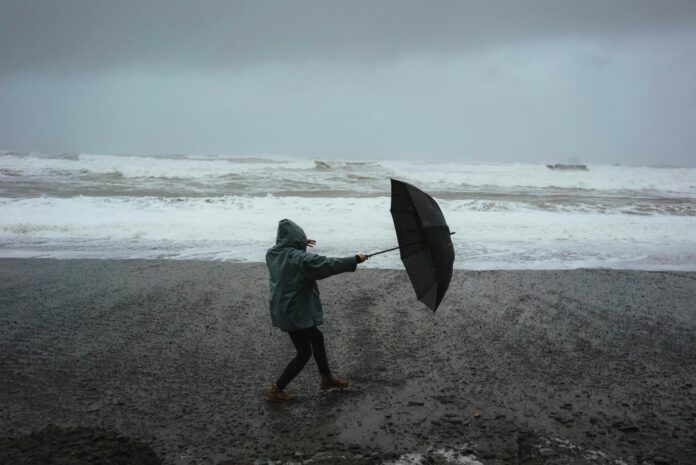“Dirty rain” is set to continue falling on parts of Florida this week. But what exactly is this ominous-sounding type of precipitation?
Dirty rain occurs when fine particles from dust storms, wildfires, or pollution get trapped in raindrops. In Florida’s case, a massive plume of Saharan dust carried by easterly winds across the Atlantic Ocean is meeting summer rainstorms. This results in a filmy residue on outdoor furniture, windows, cars, and other exposed surfaces. The dust in dirty rain can also clog air conditioning units, so Floridians may have some cleaning up to do.
Saharan Dust in Florida?
The Sunshine State can blame its forecast on the Saharan Air Layer (SAL), a cloud of extremely dry, dusty air that forms over the Sahara desert during late spring, summer, and early fall. According to the National Oceanic & Atmospheric Administration (NOAA), this layer can travel thousands of miles from its African origins and impact locations as far as Florida and Texas.
During peak SAL season from late June to mid-August, outbreaks happen every three to five days as tropical waves send copious desert dust airborne. Trade winds then carry the hot, dusty cloud westward. This year’s SAL wave is one of the largest ever recorded in July, reports Fox35 Orlando. Although SAL outbreaks can degrade air quality and cause a mess, they also have benefits. The layer’s warmth, dryness, and strong winds can suppress tropical cyclone formation and keep storms from intensifying. Plus, it makes for striking sunrises and sunsets.
A number of NOAA satellites track SALs to help scientists understand their formation, interaction with tropical weather systems, and impact on the U.S. Gulf Coast and Florida, improving weather forecasts in the process.
Where in Florida Will Dirty Rain Fall?
Saharan dust arrived in central Florida on Saturday, resulting in murky, hazy skies expected to linger into the week, according to the National Weather Service. Central and South Florida, where a heat advisory is currently in effect, are expected to bear the brunt of the dirty rain. Unlike regular rain, the dirty variety won’t leave overheated residents feeling refreshed, but Saharan dust can help lower temperatures by reducing the amount of sun filtering through.
At least 2 to 4 inches of rain is expected to fall over the southeastern states through the week’s end, according to AccuWeather.
Can Dirty Rain Impact Your Health?
NOAA’s Atlantic Oceanographic and Meteorological Laboratory recommends consulting with state branches of the Centers for Disease Control and Prevention for guidelines on weather phenomena in specific regions. For dirty rain, it urges those with respiratory conditions to exercise caution.
“In general,” the lab says, “people with asthma and other chronic lung diseases should take precautions to maintain control of their conditions and reduce exposure to dust by limiting time outdoors during dust storms.”
At least there will be cool photos. NOAA says the best times to spot it are typically a few hours after sunrise and in the late afternoon.


